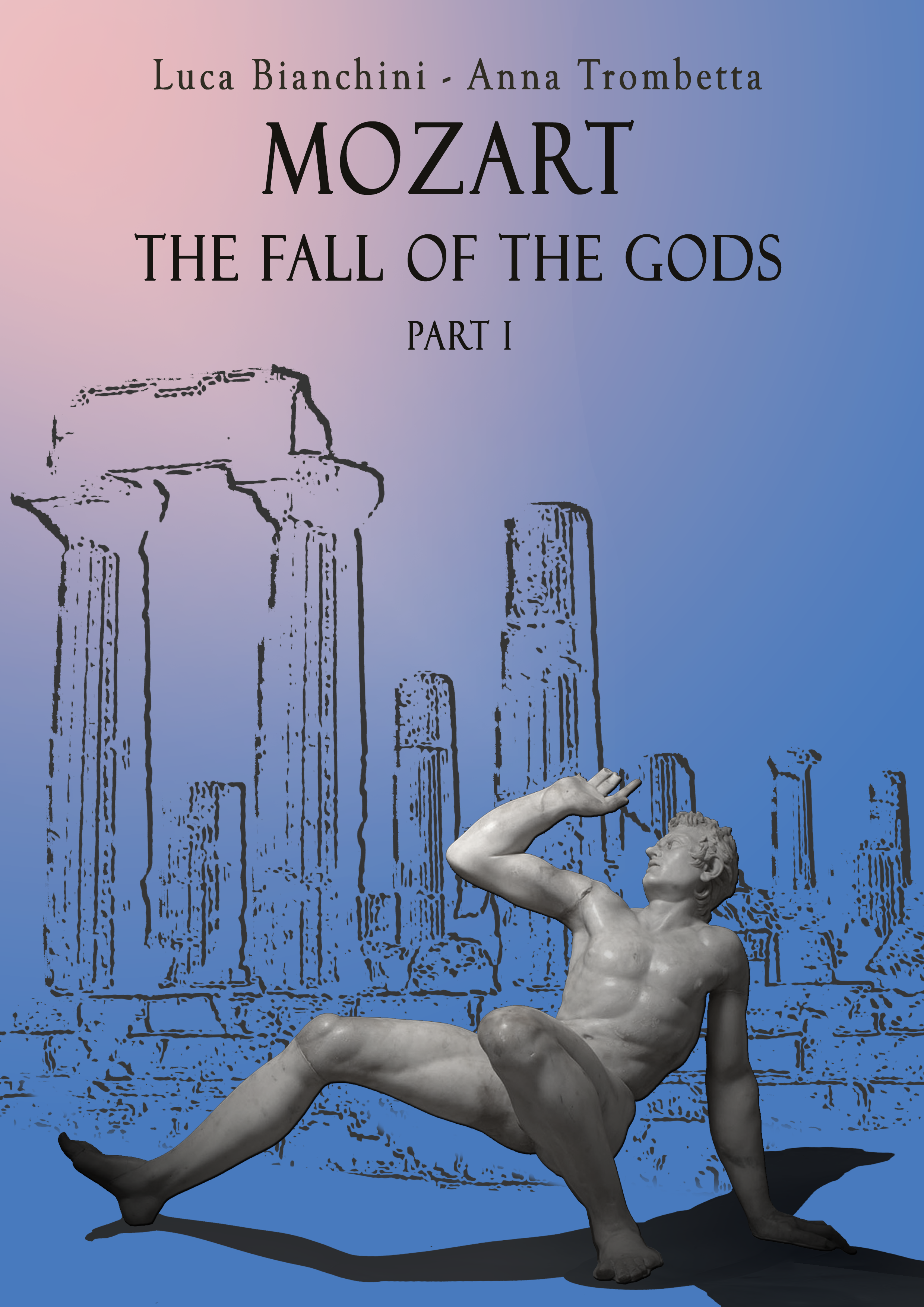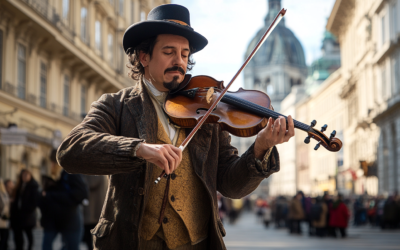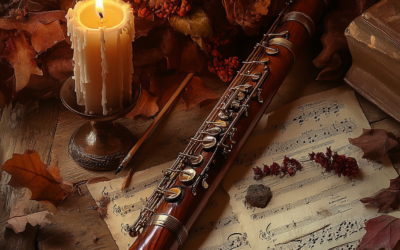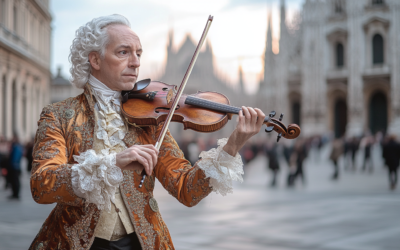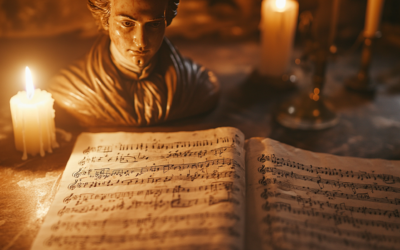The Rattling Symphony
A Critical Take on K. 17
Often attributed to Mozart, the K. 17 symphony is anything but refined. Lacking orchestration and filled with gaps, it raises more questions than answers about its true authorship.
Mozart: The Fall of the Gods
This book compiles the results of our studies on 18th-century music and Mozart, who has been revered for over two centuries as a deity. We dismantle the baseless cult of Mozart and strip away the clichés that falsely present him as a natural genius, revealing the contradictions in conventional biographies. In this work, divided into two parts, we identify and critically analyze several contradictory points in the vast Mozart bibliography. Each of the nearly 2,000 citations is meticulously sourced, allowing readers to verify the findings. This critical biography of Mozart emerges from these premises, addressing the numerous doubts raised by researchers.
"When gaps, borrowings, and inconsistencies are overlooked, even a shoddy piece can be glorified as a stroke of genius."
Mozart: The Fall of the Gods
Symphony K. 17 No. 2 in B-flat Major
Can a symphony be described as “rattling”? Indeed, sometimes it can. Such is the case with K. 17, a piece that was long attributed to Wolfgang Amadeus Mozart, only to later be unmasked as a spurious work. This is Symphony K. 17 No. 2 in B-flat Major, according to the Köchel catalogue.
Movements
- Allegro (B-flat Major)
- Andante (E-flat Major)
- Minuet I (B-flat Major)
- Minuet II (E-flat Major)
- Presto (B-flat Major)
Attribution to Johann Sebastian Bach? The K. 17 No. 2 symphony was not written by Wolfgang; it’s a counterfeit, its true author unknown. When critics can’t precisely determine if a piece is by Wolfgang, they often attribute it to dear old Leopold. Even today, one might still read that “the attribution is uncertain, possibly by Leopold Mozart.” Gherardo Casaglia, on page 24 of his catalogue, writes that it is “doubtful, attributed to Leopold Mozart (or Johann Sebastian Bach)!” A name can indeed become a sort of guarantee – for commercial purposes, at least.
Doubts If the authorship is uncertain, and it’s certainly not by Johann Sebastian Bach or Mozart the son, there’s no reason it must be by Mozart the father either. Even if the Andantino theme, when transposed from E-flat to F, does appear in Leopold’s Violinschule. Given the number of themes Leopold pilfered, it’s equally plausible that the true composer was someone else entirely. Massimo Mila noted an archaic and provincial quality in this piece, reflecting a rather antiquated view of the German symphony. Della Croce similarly highlights these stylistic archaisms, mirroring the critiques by Wyzewa and De Saint-Foix. But, even in Mila and Della Croce’s time, it was already known that the work was not by Wolfgang.
Certainties Those who didn’t suspect K. 17 was spurious, like Wyzewa and De Saint-Foix, defended its questionable quality in various ways:
“Chelsea, between July and September 1764. The autograph of this symphony, which Köchel saw in 1860 in the André collection, carries no date of composition. But some suspect it might be even earlier, considering that it was left incomplete, bearing in mind the quality of contemporary works. Not only is it somewhat rougher and musically poorer, but without a doubt, it represents a symphonic model that Mozart would abandon completely after his stay in London, under the influence of Italian composers and Johann Christian Bach. He would then adopt a new symphonic style, which he would consistently retain until his 1768 Vienna journey.
Let us mention some peculiarities of this Symphony. Immediately, it’s clear that young Mozart was not yet capable of orchestrating. In the first movement, he forgot to write parts for the winds… In the Andante, the second violin and viola parts are left blank after 5 or 6 measures. In the Finale, he leaves the opening four bars of the oboe and horn parts completely empty. The second Minuet is the only movement written in full, though even here, the winds are absent. As for the first Minuet, Mozart quickly tired of notating both the first violin and bass lines – or perhaps, as one might suspect, he copied an old harpsichord minuet, intending to orchestrate it later.”
Illustrious Commentaries It is enlightening to read how, in speaking of Mozart, even a monstrosity like this piece is somehow spun as a product of genius, despite its gaps, borrowings, and glaring absurdities:
“The Finale is the only movement where Mozart’s genius might be glimpsed. It’s a lively, well-paced piece with neatly assembled ideas. The echo effects reveal his early attempts at contrasting the violins and basses. Indeed, the work of a novice. And one can only be amazed at how quickly Mozart would soon master all the secrets of a style and genre that only now presents itself to him for the first time.”
— Wyzewa and De Saint-Foix
Curious and Entertaining Questions If Mozart wasn’t capable of writing the rattling K. 17, who, one wonders, composed the K. 16?
You May Also Like
The Echo of the Pummerin Bell
The powerful resonance of the Pummerin bell in Vienna may have influenced Mozart’s compositions, particularly Sarastro’s arias in The Magic Flute.
The Hidden Influence of Joseph Boulogne, Chevalier de Saint-George
Joseph Boulogne, known as the “Black Mozart”, was shaping the future of music while Mozart was still struggling for recognition in Paris. But history has buried the significant influence Saint-George had on Mozart’s career, erasing his pioneering style from the narrative.
The Forgotten Viennese Quartets
Attributing Offertorium K.34 to Mozart is not just misleading, it reflects the careless methods used by 19th-century scholars to inflate his legacy. Without an autograph or solid evidence, this work should not be considered part of his output.”
Mozart’s Bassoon Concerto: A Question of Authorship
The Bassoon Concerto K.191 raises more questions than it answers. Long thought to have been composed for a Munich bassoonist, new evidence suggests Mozart had no clear performer in mind. The concerto’s disjointed movements and other dubious compositions attributed to Mozart add further complexity to his legacy
The Uncertain Origins of Mozart’s Early String Quartets
Mozart’s so-called “Milanese Quartets” (K.155, 158, and 159) have long been subject to debate, primarily due to their ambiguous instrumentation and structural weaknesses. Were these works part of a larger series of orchestral divertimenti, hastily repurposed as string quartets? The answer remains elusive, reflecting the young composer’s struggles to find his own voice.
Simplicity, Errors, and the Myth of Perfection
Mozart’s canons are not as complex as often claimed, with notable errors in K.553 and K.554, and the myth of “V’amo di cuore teneramente” K.348 being debunked.

